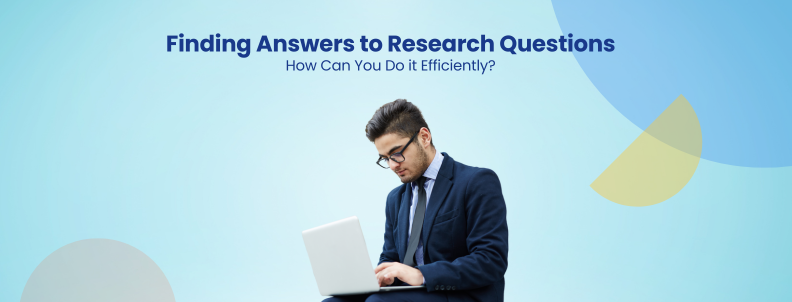Access to precise and reliable information is vital while working on groundbreaking technologies, product enhancements, or technical solutions. Finding accurate answers to research questions timely can make or break an R&D project.
However, with the increasing volume of scientific literature, patents, and technical documents, 66% of researchers feel overwhelmed by the published data they must review.
Hours spent sifting through journals, patents, and technical documents lead to information overload. AI research tools transform this process by quickly and accurately analyzing millions of patents and papers, helping you find relevant answers to R&D questions in seconds. This allows you to cut through the noise and get straight to the insights that matter most.
Understanding the Challenge
According to a report by the STM (International Association of Scientific, Technical, and Medical Publishers), there are over 33,100 active peer-reviewed journals, collectively publishing more than 3 million articles a year. The World Intellectual Property Organization (WIPO) also states that more than 3.5 million patent applications were filed worldwide in 2023 – a record high. This abundance of information presents both an opportunity and a challenge: the opportunity to make groundbreaking discoveries and the challenge of finding the most relevant data amidst the noise.
The sheer volume of data leads to information overload, making it hard to distinguish between high-quality, relevant research and less significant studies. This hampers the ability to find accurate answers to research questions and delays research progress, impacting the project’s innovation timeline. Research is time-sensitive, necessitating quick answers without compromising quality. Staying current is a constant struggle due to the rapid pace of technological advancement — what was relevant a year ago might be outdated today.
Why Traditional Methods Fall Short
Traditional methods of finding answers to research questions involve combing academic journals, patents, and other resources. This process is not only time-consuming but also prone to human error. Furthermore, there is a high risk of missing out on critical information or misinterpreting data. These include manual methods:
- Literature Reviews: Scanning through journals and conference proceedings.
- Patent Searches: Browsing patent databases.
- Expert Consultations: Speaking with colleagues and industry experts.
- Library Archives: Accessing physical and digital archives of research institutions.
Additionally, the large volume of published material makes it nearly impossible to conduct an exhaustive search without advanced tools. These challenges highlight the need for more efficient, accurate, and comprehensive research methods to speed up the R&D process.
Formulate Effective Research Questions
The first and most crucial step in any research is clearly defining the research question. A well-defined question sets the direction for research and determines the methods that will be used to find answers. According to a National Library of Medicine study, well-formulated research questions lead to more efficient literature searches and better study.
Good research questions are specific, measurable, and researchable. They should challenge existing knowledge and open up new avenues for exploration. Here are some tips for crafting strong research questions:
- Be Specific: Avoid vague questions and narrow down the questions to particular materials, processes, or technologies. Instead of asking, “How can we improve battery life?” ask, “What materials can be used to extend the battery life of lithium-ion cells?”
- Be Measurable: Ensure that the question is framed in a way that allows for measurable outcomes and can be answered with data or information. For example, find the answer to “What is the energy density of graphene-based batteries compared to traditional lithium-ion batteries?” instead of “How effective are new battery technologies?”
- Be Researchable: Make sure enough information is available to answer the question. Questions like “What are the latest advancements in perovskite solar cells?” are more researchable than niche topics with limited data like “How does the crystal structure of a specific alloy affect its electrical conductivity at sub-zero temperatures?”
Examples of perfect research questions:
Wrong way: How can we make our products more sustainable?
Right way: What biodegradable materials can be used in the packaging of electronic devices to reduce environmental impact?
Wrong way: What were the primary materials used in battery technology in the 1990s?
Right way: What are the most recent developments in solid-state battery technology?
Wrong way: How does the color of a device affect its marketability?
Right way: What key factors influence consumer adoption of foldable smartphones?
Wrong way: How can we develop a completely new battery technology that has never been tried before?
Right way: What improvements can be made to existing lithium-sulfur batteries to enhance their cycle life and energy capacity?
Wrong way: How do various environmental factors affect different aspects of battery performance?
Right way: How does temperature variation affect the charge and discharge rates of lithium-ion batteries?
However, even the best questions can lead to dead ends if you don’t have the right tools to find the answers. That’s where Slate Pro comes in.
Slate Pro: Your AI Research Assistant
Slate Pro is an AI-driven research tool specifically designed to assist R&D professionals in finding answers to their research questions. It sifts through millions of patents and research papers to provide precise, relevant, and accurate research-backed solutions.
Slate Pro scans technical literature, deciphers complex scientific terms, and identifies key elements such as chemical compositions, potential applications, and novel data. Human researchers extract information in weeks, but Slate Pro accomplishes it in a fraction of the time.
Here’s how to leverage Slate Pro to enhance your research process.
Steps to Finding Answers with Slate Pro
Let’s walk through the steps to effectively use Slate Pro to find answers to your research questions.
Step 1: Input Your Research Question
To begin, input your research question into Slate Pro. The AI is trained to understand complex queries and technical jargon commonly used in R&D. For instance, you can ask, “What biodegradable materials can be used in the packaging of electronic devices to reduce environmental impact?” or “What materials can be used to extend the battery life of lithium-ion cells?”
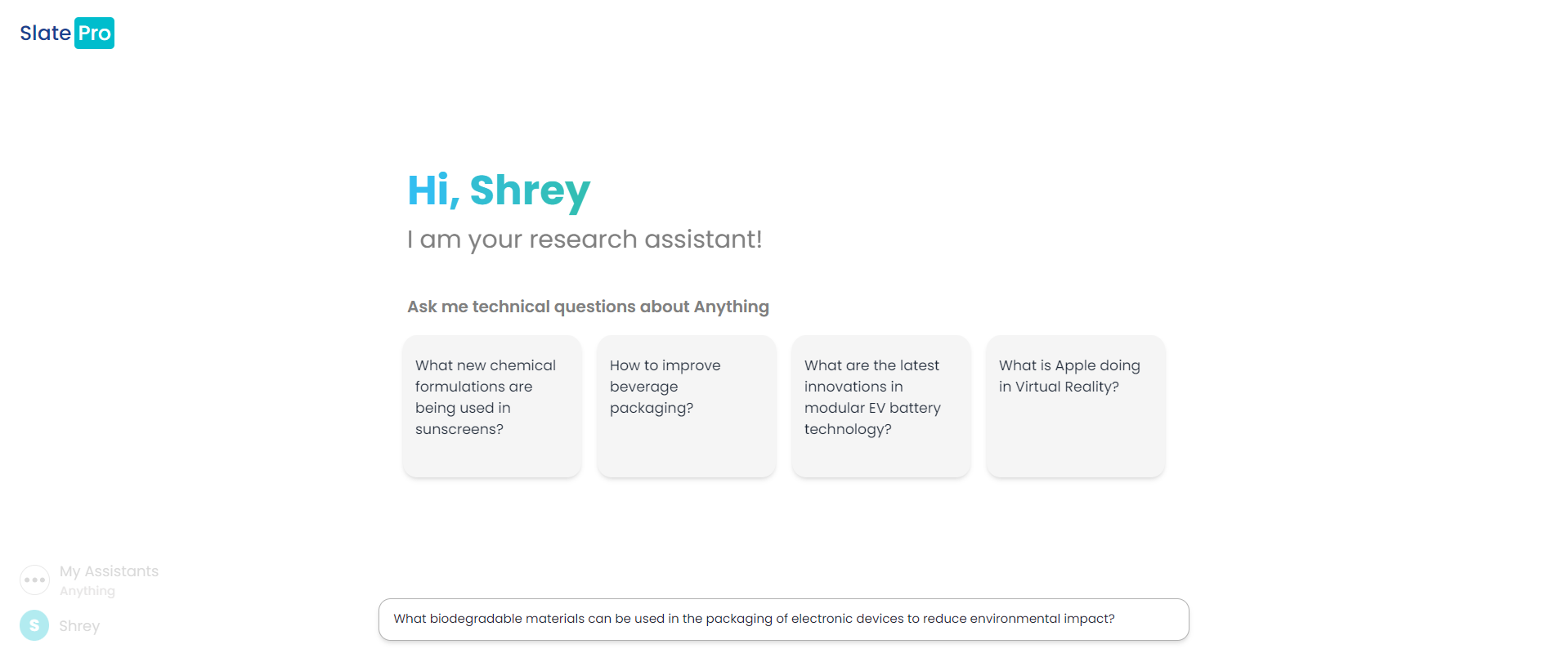
Step 2: Review the Results
Slate Pro provides multiple answers to your research question with a list of relevant documents, including patents, research papers, and technical articles. Each result includes a brief summary, key insights, and links to the full document. The tool prioritizes the most pertinent information, saving time and effort and allowing you to quickly assess whether a document is worth further investigation.
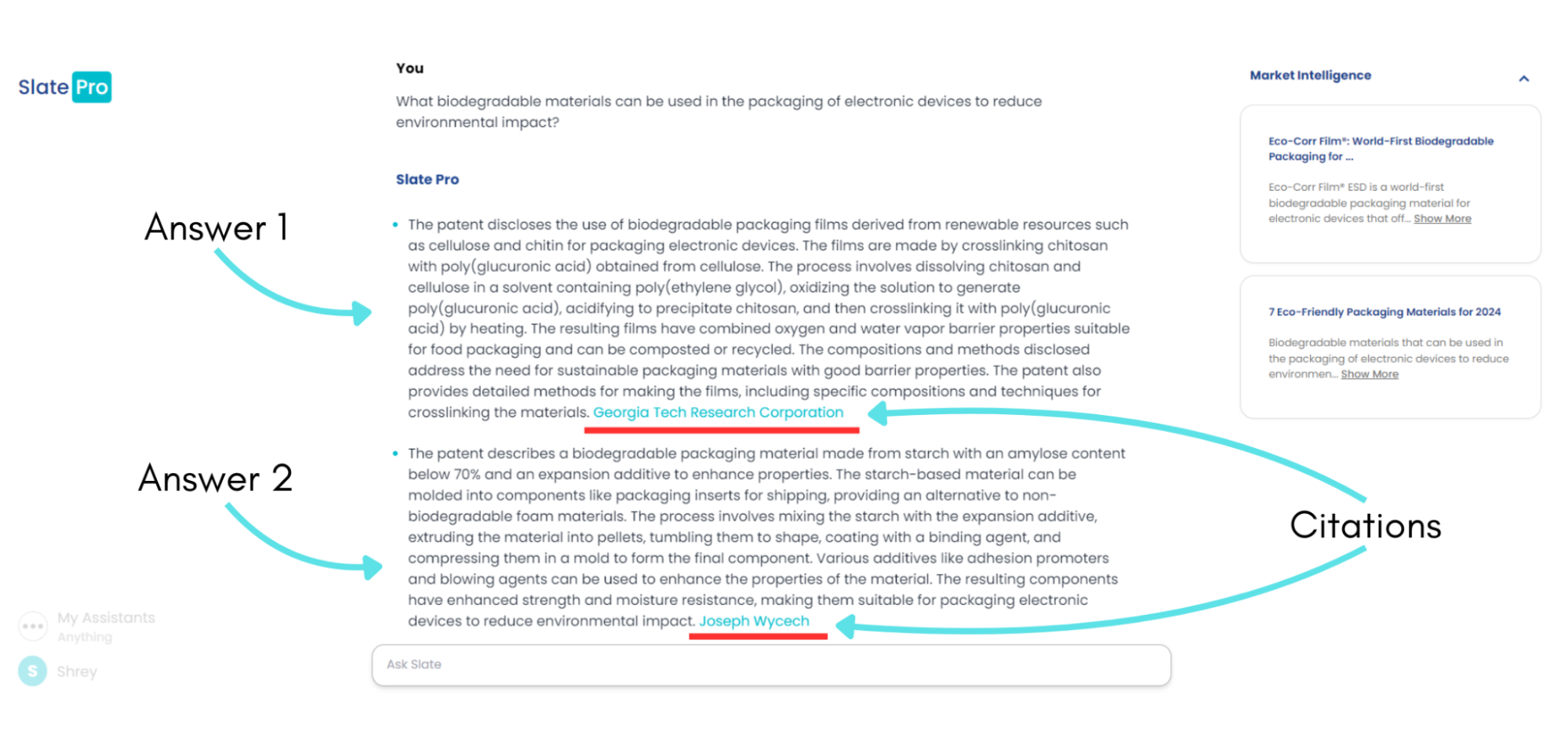
Step 3: Analyze the Findings
After gathering the relevant documents, analyze the findings. Look for solutions and insights that answer your research question. Compare findings from different documents to draw meaningful conclusions, and go deeper into research for a detailed solution.
How to Make the Most Out of Slate Pro
Using Slate Pro effectively helps you find answers to research questions and significantly enhances your research capabilities. Here are some tips to maximize the benefits of this powerful AI research tool:
Leverage AI Insights
Pay close attention to the AI-generated summaries and key points highlighted in the search results. These summaries give a quick overview of the content, saving you time from reading entire documents to determine their relevance.
Monitor Competitive Innovation
Use Slate Pro’s competitor monitoring capabilities to keep an eye on advancements made by other companies in your field. This lets you stay informed about your competitors’ latest research, patents, and technological developments, giving you a strategic edge and helping you adapt and innovate more effectively. Ask questions regarding your competitor, like “What are the advancements Lyten doing in lithium-ion battery?”

Gain Market Intelligence
Slate Pro provides market intelligence by analyzing the latest news and advancements related to your research query. Use it to gather data on market trends, emerging technologies, and industry developments. This information helps align the research with market needs and identify potential opportunities for innovation.
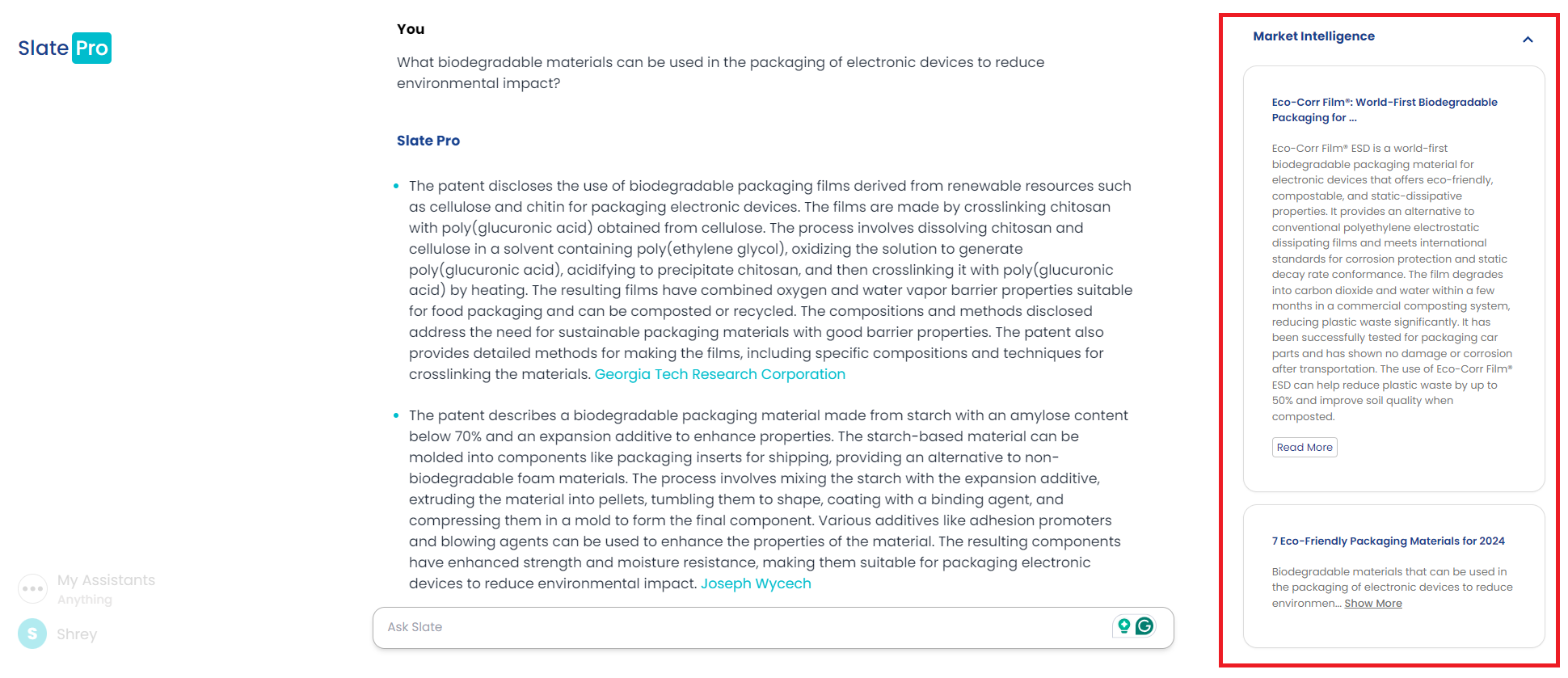
Make Use of the Citation
Properly citing sources is crucial in research. Slate Pro provides multiple data-backed solutions to complex research challenges with proper citations. This ensures research finding integrity, maintains professional standards in your work, and saves time when compiling the research.
Ask follow-up questions
To keep the conversation going, you can ask follow-up technical questions directly within the chat interface of Slate Pro. This feature ensures continuous engagement and deeper exploration of topics.
For instance, you ask a question on Slate Pro, “What biodegradable materials can be used in the packaging of electronic devices to reduce environmental impact?” It gives you several solutions.
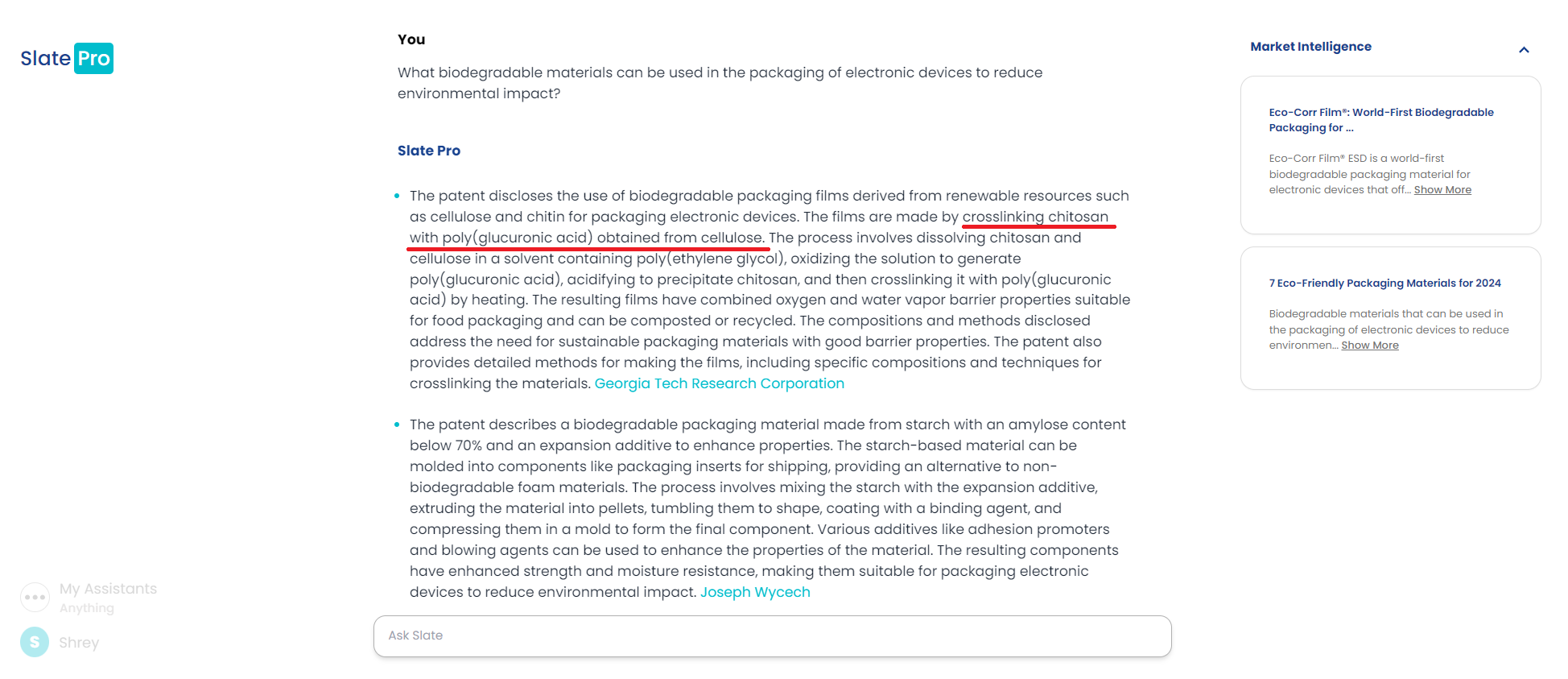
Pick a solution (here, chitosan) and ask follow-up questions to get detailed answers to your research question. For example, “How impactful chitosan is for the environment-friendly packaging of electronic devices?”
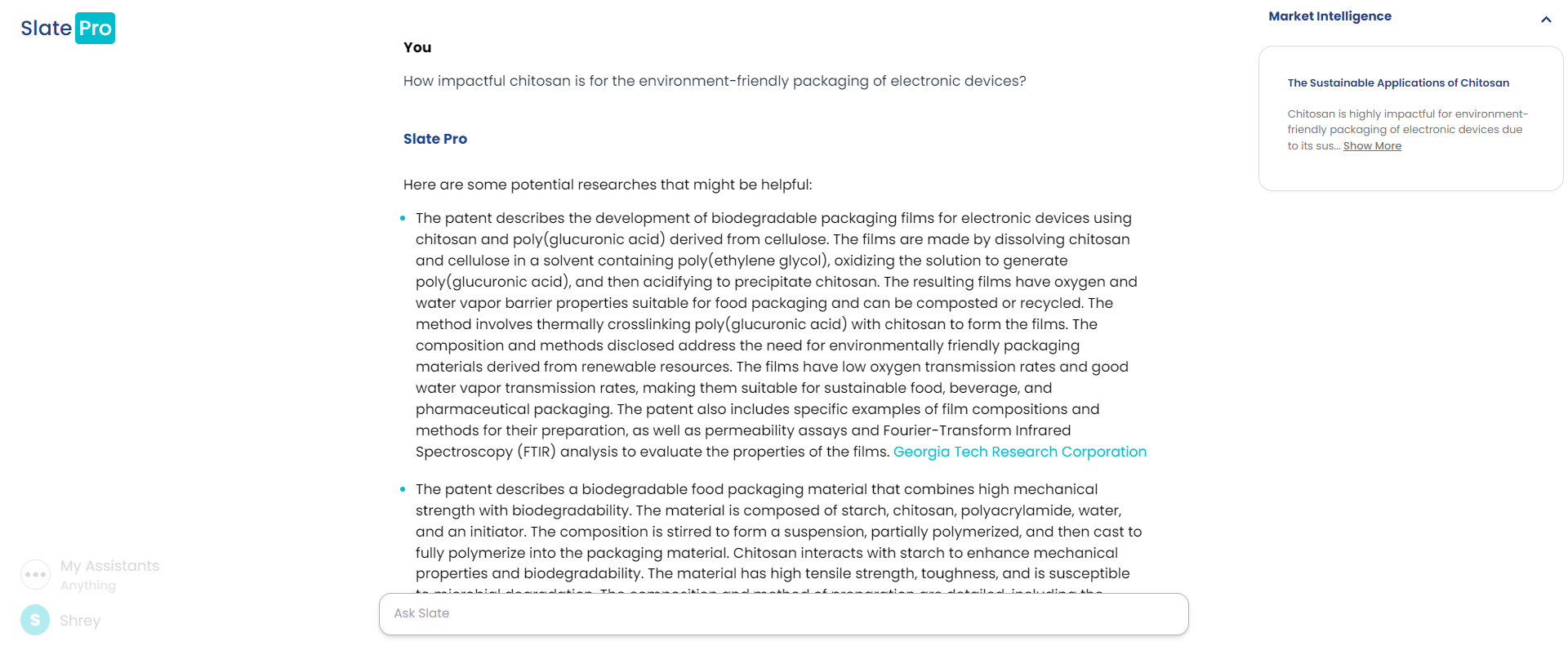
Ensure Data Privacy
Slate Pro prioritizes data privacy and security. It never trains its models based on the question input. All your search queries, results, and personal information stay with you. Slate Pro is SOC2 certified and adheres to strict data privacy protocols, which ensure that your research activities remain secure and you can do your research without any worries.
Find Answers to Research Questions
According to a survey by Oxford University Press, 76% of the 2,345 researchers are using AI tools, and more than two-thirds of those surveyed said that AI will make their research more efficient. Growing reliance and the shift towards AI integration in research highlights the transformative potential of tools like Slate Pro in modern R&D.
Slate Pro helps in finding answers to research questions from millions of patents and research papers. Whether you’re working on improving existing products, developing new materials, or exploring cutting-edge technologies, it helps you find accurate and relevant solutions you need to succeed. It streamlines the research process and opens new possibilities for discovery and innovation. Stay ahead of the curve, save time, enhance research quality, and make data-driven decisions with the comprehensive insights provided by Slate Pro.
Authored By – Shrey Gupta, Product Marketer

